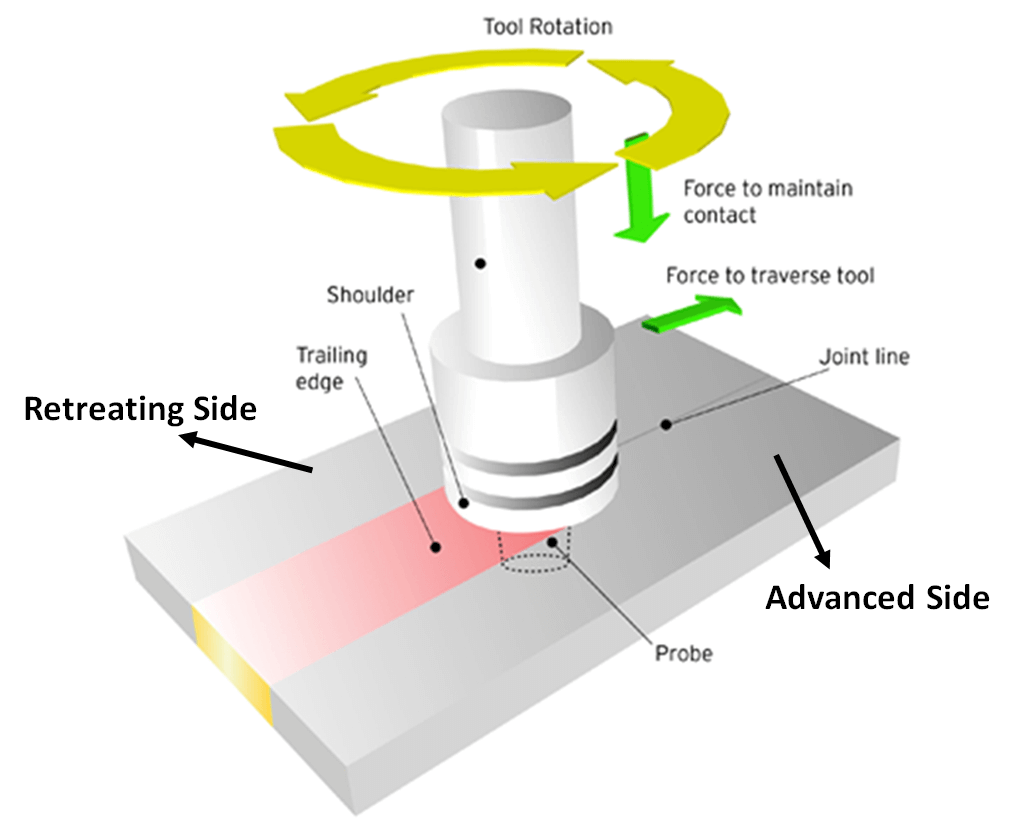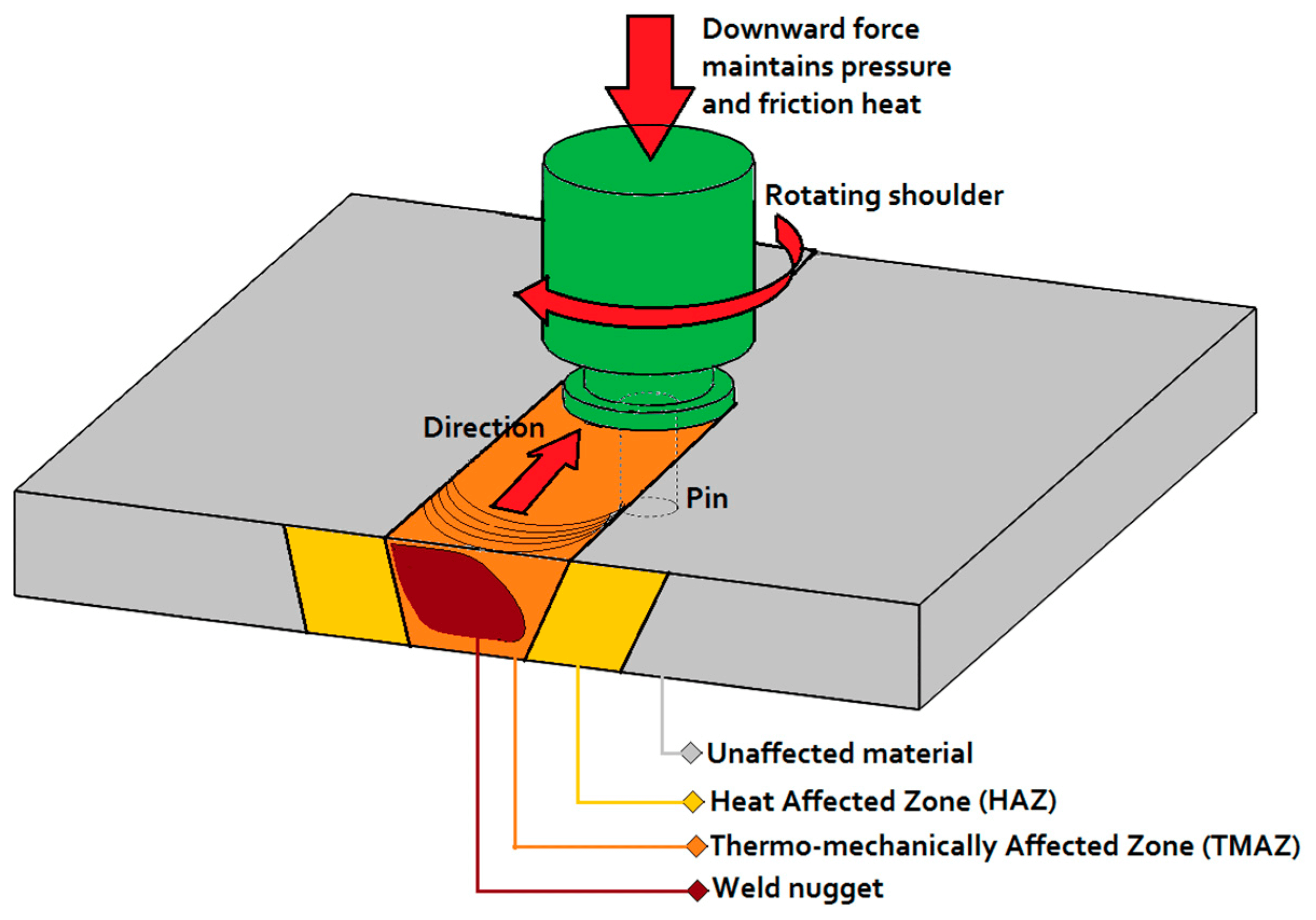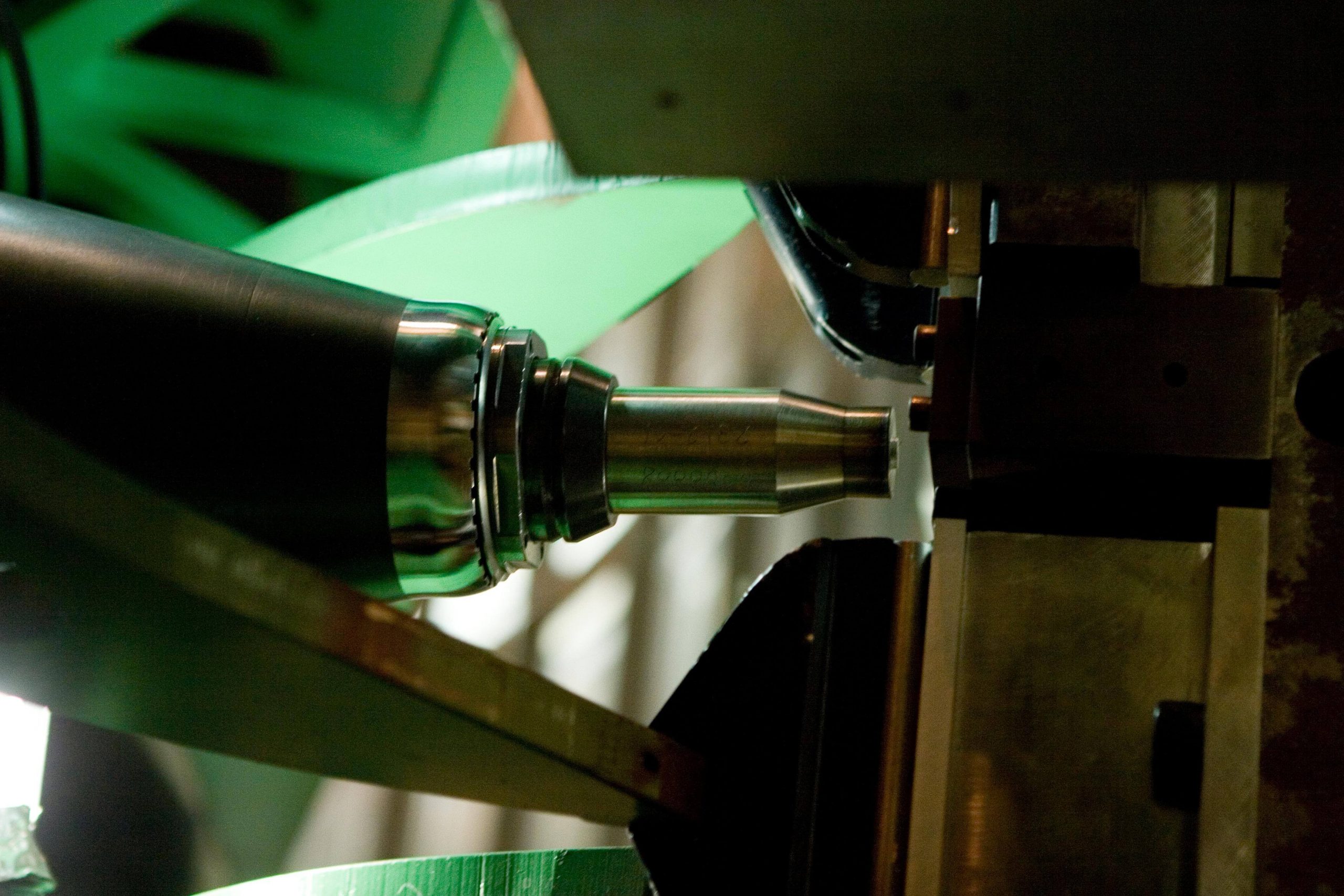Vor- und Nachteile des Reibrührschweißens (FSW): (FSW vs. Rotationsschweißen)
2020-11-23Reibschweißen: Prinzip, Vorteile und Anwendungen

Das ist eine Art des Druckschweißens. Hierbei entsteht die Schmelze der Oberflächen durch Umwandlung der mechanischen Energie der Reibungskraft der Teile in Wärmeenergie.
Reibrührschweißen (FSW) - was ist das?
Das Reibrührschweißen ist eine Art Verbindung unter Verwendung von Druck. Dies bedeutet, dass sich die zu schweißenden Teile durch Reibung gegeneinander erwärmen. Ein Teil bleibt stationär, während sich das andere dreht, wodurch die Teile miteinander verbunden werden können.
This method is quite new. And, perhaps, not all specialists or amateur welders had time to get acquainted with such welding technology. Therefore, we will read the principles of its operation, advantages, disadvantages, parameters, features and varieties of this method in more detail.
In this article we will look at:
- Wie Reibrührschweißen (FSW)works?
- What types of technology exist?
- What are the advantages and disadvantages of friction welding?
Application and types of Friction Stir Welding (FSW)
Generally, friction welding is commonly applicable in the following operations:
- compounds of metals and alloys with a melting point of up to 1800 degrees
- welding flat parts of the same thickness at a turned angle
- longitudinal pipe welding
- making bolts
- Replacing soldering of small parts with machined surfaces.
Das Reibschweißen eignet sich zum Verbinden kontaminierter Teile, da keine Vorreinigung erforderlich ist. Darüber hinaus entfernen wir den Oxidfilm und das Fett zu Beginn der gegenseitigen Reibung der Oberflächen.
Es gibt die folgenden Hauptarten des Reibschweißens :
- oszillierend (linear)
- unter Rühren, mit kontinuierlichem Antrieb
- radial
- Orbital, Trägheit
Vor- und Nachteile der Methode
Die Vorteile des Reibrührschweißen (FSW) sind:
- Geringerer Energieverbrauch im Vergleich zu anderen Schweißarten
- Darüber hinaus eine geringe Anzahl von Mängeln
- gleichmäßige Struktur der Schweißnaht
- die Fähigkeit, den Prozess genau zu steuern
- Geringe Menge schädlicher Emissionen
- Daher hohe Metallnutzungsrate
- Die Fähigkeit, den Prozess zu automatisieren.
- Low requirements for surface cleanliness. There is no need to clean the surface of the parts to be welded. The side surfaces may also be uncleaned. Similarly, this significantly saves time spent on auxiliary operations.
- Possibility of welding various metals. The welding process allows welding both alloys and metals of the same name and dissimilar alloys. Furthermore, other welding methods are useless here. For example, it is possible to weld steel to aluminum, copper; aluminum with copper, titanium and so on.
- Hygienic process. The welding process compares favorably with the absence of ultraviolet radiation.
Disadvantages of the Friction Stir Welding (FSW):
- Friction Stir Welding (FSW) giveslimited applicability
- bulky equipment
- Limited connection surface.
Friction welding, principle and features:
Friction welding is a type of pressure welding in which heating goes out by friction caused by the rotation of the welded product.
Due to the emerging frictional forces at the points of contact, a very rapid heating and transition of the material into a plastic state occurs.
Thus, friction welding goes by a process in which mechanical energy supplied to one of the parts to be welded is converted into heat.
Friction welding is a process that converts the mechanical energy of the movement of one of the parts into heat energy. Rotation is the most common method for this. Similarly, either one of the parts or an insert between them can rotate. At the same time, the parts presses against each other by constant or increasing pressure. In this case, heating occurs directly at the junction of the parts.
How does Friction Stir Welding (FSW) work?
Reibrührschweißen (FSW) process is not so simple. After the completion of the welding process, upsetting occurs and the rotation stops quickly.
In the welding zone at the joints of the parts, the following processes take place: with an increase in the rotation frequency of the workpieces and the effect of compressive pressure, the contact surfaces rub against each other.
Similarly, fatty and contact films present on parts in their original state are destroyed. After which the boundary friction comes by dry friction. Hence, individual micro protrusions begin to contact each other and deform.
Juvenile areas form, where the bonds of surface atoms do not saturate. Moreover, metal bonds immediately appear between them. In addition, they immediately destroy due to the relative movement of the surfaces.
Principles of using friction stir welding for joints
This process means that one does during its rotation. Moreover, it will create thermal energy, as a result of which the materials combines with each other.
But not only one of the parts can rotate, but also a special tool for friction stir welding in the form of an insert. In addition, it also contributes to a high-quality connection of parts.
Friction welding: technology features
Friction welding is a subtype of pressure welding. The technology involves heating the parts to be welded using friction. For this, one of them moves (rotates), while welding with the other.
Anwendungsbereich des Reibrührschweißens (FSW)
Das ist im Maschinenbau am weitesten verbreitet, vor allem im Werkzeugbau. Es ist auch bei der Montage von Einbauten von Kernreaktoren üblich. Das Reibbonden von Werkstücken aus Aluminium- und Magnesiumlegierungen ist beliebt in:
- Elektrotechnik
- Elektronik und
- Luft- und Raumfahrt
Die Technologie ist auch in der Verkehrstechnik üblich. Die radiale Methode ist bekannt für die Herstellung von Geräten für die Bergbau- und Verarbeitungsindustrie.
Fazit
In jüngerer Zeit hat das Reibrührschweißen (FSW) has begun its journey in shipbuilding and food processing engineering.
We have covered such a process as friction welding. As you can see, this welding process is different from others, and has many advantages. However, it is quite specific and not suitable for all tasks. Nevertheless, in many cases its use is justified.
The technology demonstrates efficiency and a tendency to replace traditional welding methods in such areas as:
- to replace soldered and riveted joints;
- Replace contact electric welding;
- to restore products and complex tools;
- for welding workpieces to prepared surfaces






